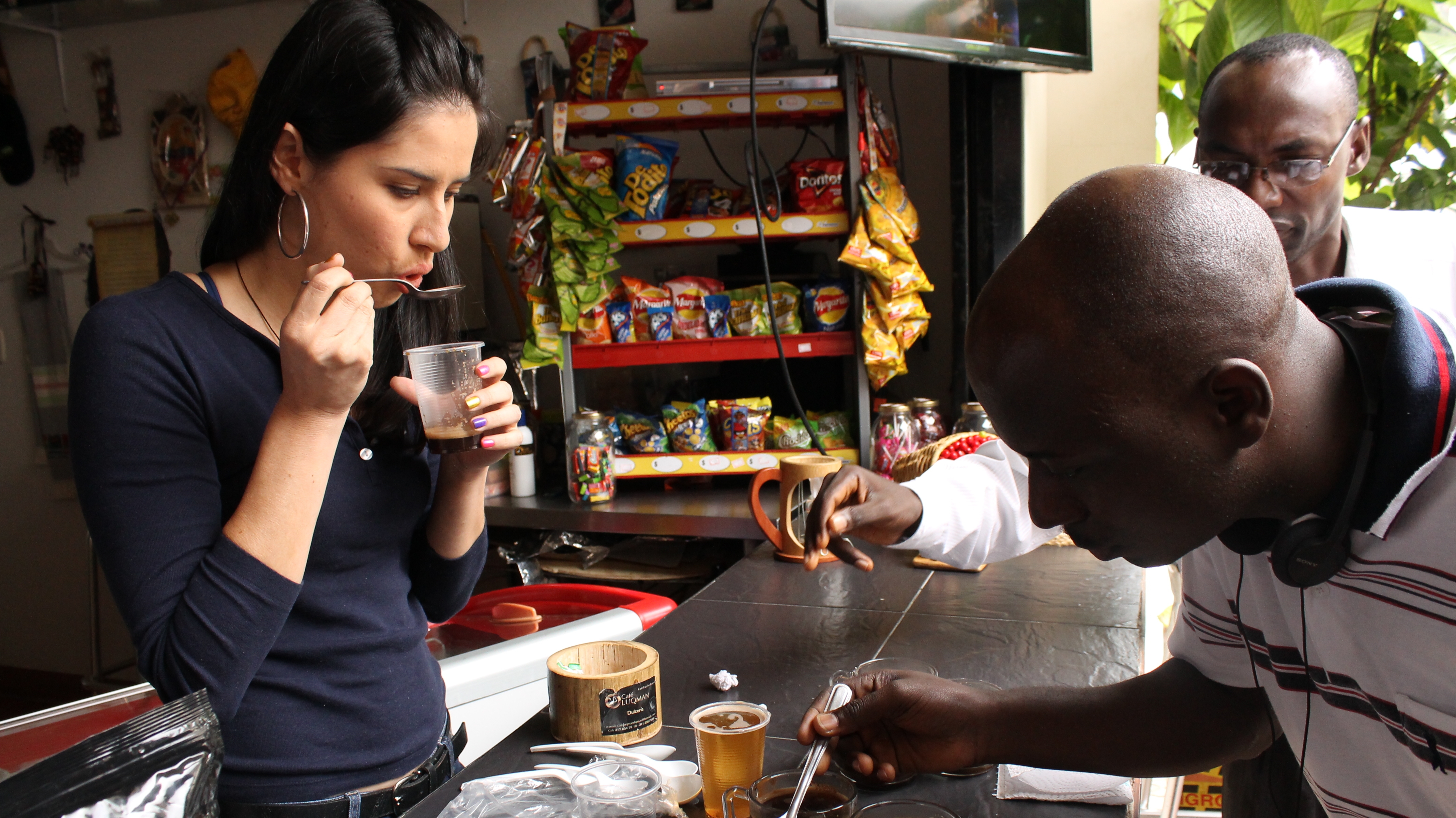Coffee from Colombia or coffee from Africa? According to the connoisseurs, each has its virtues, and preference for one or the other depends on the palate of each consumer. But what is certain is that Colombia and the coffee-producing nations of Africa are among the largest producers in the world and, for some time now, they have been trying to produce a coffee with benefits that go far beyond its delicious taste.
This exchange of ideas started when farmers from Rwanda and Burundi began exploring ways to ensure that coffee production focused not only on good quality, but also on caring for the environment, the long-term sustainability of the crop, the generation of additional sources of income within the coffee landscape, such as agrotourism, and the welfare of all involved in its production. “Both countries began to identify these elements as important sustainable management practices for the landscape that could have many environmental and social benefits,” explains Paola Agostini, World Bank coordinator for the Global Environment Facility, TerrAfrica, and FCPF in Africa.
It is therefore not surprising that, in a short time, interest grew in the so-called “coffee region” in the heart of Colombia, an area of intense green and beautiful mountains, which was declared in June, 2011 a World Heritage Site by UNESCO.
“A lifetime” of coffee
To get to Fabiola Vega’s farm in the department of Valle del Cauca, you have to travel in a “Willys” jeep. The legendary vehicle—originally designed for war—is the only one with the strength and resistance needed to climb the narrow, winding roads in these mountains.
At the age of 65, Fabiola says that her experience with coffee is a “lifetime” one, while she proudly shows off the “cherries” (coffee fruit) that have started to ripen beneath the banana and other generous shade trees, which help to prevent pest infestations, save on fertilizers, and produce a high quality coffee.
Apart from coffee farming, and using the advice from a foundation that specializes in sustainable projects, 35 cows are being reared on the farm and 600 trees are planted each year to reforest the area. These other activities—in addition to the tourists who come to this region because of its beauty—mean more income sources for coffee farmers.
“I haven’t added anything to this plot. It thrives just like that, it is being reforested and I use the same fallen leaves as fertilizer,” explains Fabiola to an unusual group of visitors: coffee farmers and experts from three African countries: Burundi, Rwanda, and Ethiopia.
Great coffee tradition
In addition to the tropical climate, a mountainous topography, and experience with armed conflict, these nations also share with Colombia a reputation of being major coffee producers.
But on the other side of the Atlantic, the methods are different. In Rwanda and Burundi, for example, shade-coffee farming has only just begun. However in Colombia, where there are approximately 560,000 coffee-growing families, it is a centuries-old tradition, despite the fact that for several years sun cultivation was encouraged. In contrast, in Ethiopia, country of origin of coffee, coffee can still be found growing wild in the forests.
In Burundi, half of its almost nine million inhabitants depend on coffee, and it is still grown under the sun. “And with climate change, we have seen that with the droughts, production decreases,” explains Jumaine Hussein, World Bank consultant on natural resources management.
In 2013, Colombia produced more than 650 million kilos of coffee. Almost 40 percent of the total surface area is used for shade-coffee farming. The purpose of the visit of the African delegation was to learn first-hand about successful coffee-production experiences that respect the environment and help improve the landscape and the living conditions of its farmers.
“For us, it is very important to create awareness of the possibility of integrating economic, environmental, social, and cultural sustainability into coffee landscape management, and it is a good option for the development of rural areas in Colombia, as well as in Burundi, Rwanda, and Ethiopia,” said Issam Abousleiman, World Bank Country Manager for Colombia.
The visitors were also able to see how a biological corridor—trees that connect two forests to preserve the biodiversity of the region and other environmental services—is established and cared for. They also shared with several coffee farmers about how they organize themselves to create alliances with commercial partners that can guarantee markets for their products, in exchange for compliance in terms of volume and quality. Finally, they had the opportunity to learn about and experience ecotourism services on a coffee farm.
An effective system
“One of the most interesting things that I have seen in Colombia is the combination of crops, the association of banana and coffee. It is a system that works very well,” says Joseph Bigirimana of the Rwanda Agriculture Board, where half a million persons live off coffee—in many cases it is the only crop—and where banana production is well developed.
“The advantage (of having different crops) is that fewer pests attack the banana plant. The other trees help conserve the soil and the shade,” explains Ricardo Díaz, with his machete hanging from his waist. Ricardo’s farm is located near Pijao in the department of Quindío, where, in addition to coffee, he cultivates bananas, avocado, and precious woods such as walnut.
At the end of the visit, the visitors from the three African countries left with a lesson learned. “I am going to encourage the members of our association to grow other crops so that they have more benefits,” said Théopiste Nyiramahoro, President of the Coffee Cooperatives Union of Kirehe (UCOCAKI), in eastern Rwanda.
But, as in all exchanges, the Colombians also have the opportunity to learn from their African colleagues. So, it is very likely that in the near future a team of Colombian coffee farmers and experts lands on a landscape similar to this one, but on the African continent.

